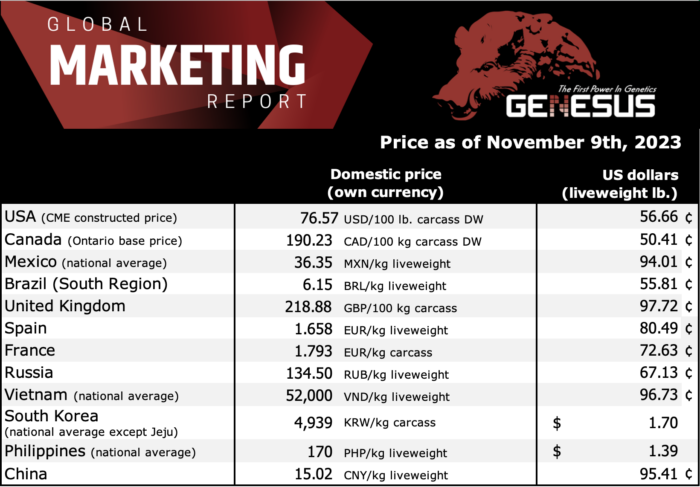Allan Bentley, Sales & Technical Manager

I am going to veer off of markets with this commentary, as we know where the market is and according to the futures, we have 6 more months of losses.
I raise F1 gilts for Genesus in Nebraska. I just went through my numbers and thought I would share them and compare my death loss to what the industry norms are. My death loss on 5,021 head was 37. That is 0.007 percent. The industry norm on feeder pig to finish is about .05 percent. I want to say that again, my death loss was 3/4’s of 1%. The industry is at 5% for feeder pig to finish. With the help of my feed salesman and some assumptions as to when those pigs died. We agreed that if the average pig died at 150 lbs., it would take $42 to get those pigs from 40 lbs. to 150 lbs. Using the difference of my death loss to the industry norm that feed cost plus the cost of that 40 lb. pig at $60. My savings of death loss comes back to $4.34/ pig sold. I have been in operations that death loss number is 10%! That means it is costing them $8.68/per pig sold to continue with their genetics. I wanted to add a bit more. From my previous experience buying cull pigs, I can make an educated assumption that the industry averages another 5% of animals that have half value. My off-quality pig number was 17 head. That is a little hard to put a different value on but talking with other producers, they agree I can double the original number of $4.34/pig from the death loss advantage, for the higher number of pigs that are not full value then what I had. We are now at about $9/head advantage. I want to add a bit more. I lost 1 pig in transport out of 5,021 head. Again, buying pigs for a packer for 21 years tells me the average loss is 1 pig for every load! There are very clear advantages feeding Genesus pigs unless you do enjoy dragging out dead pigs.
Data Showing USA Finishing Mortality

Categorised in: Featured News, Global Markets
This post was written by Genesus



